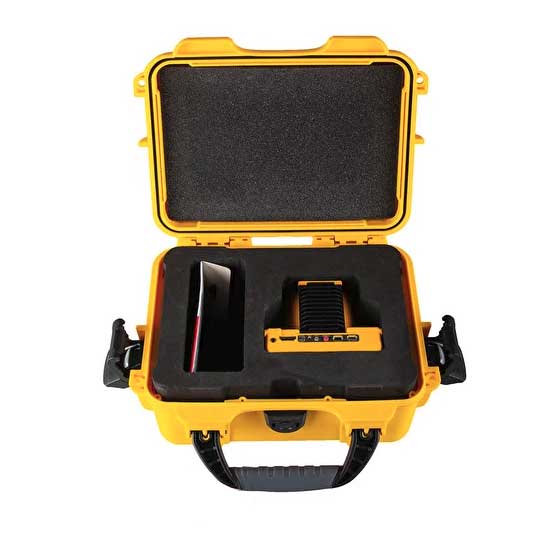

About Pergam's Laser Falcon
Laser Falcon is the lightest & smallest laser-type methane gas detector in the LMC line. The Falcon can be installed on any UAV, even the most compact. Laser Falcon is a very lightweight laser-type methane gas detector. The dramatically reduced weight of the product allows variety of new applications of the device including airborne methane monitoring and robotic instrumentation. This device can detect methane that exists about 100 meters away instantly. Measurement data is sent through a communication port and is backed up in a micro SD card. Power supply through the external power connector enables continuous operation of the device.
- Laser Falcon Specifications:
- Gas to be measured: Methane (CH4) and methane-containing gases (natural gas or similar)
- Sensitivity: 1 ~ 50,000 ppm × m
- Measuring Accuracy: ±10% 1)
- Detection Speed: 0.1 seconds
- Detection distance: 1.64 ~ 328 ft 22
- Power Supply: External power (5V-18V)
- Laser Safety Class: Guide light (Red laser light) : Class 2 / Measurement light (infrared laser light) : Class 1
- Operation Temperature: 1.4 ~ 122℃°F
- Dimensions: 3.94 inches × 3.18 inches × 3.15 inches / weight 8.12 oz
Standard accessories include: User manual, сarrying case, Micro-SD card (16GB) Power cable (4.92ft, USB Type-A — Micro USB Type-B) PC cable (3.28ft, USB Type-A — Mini USB Type-B)
LF Viewer: PC software, User manual (Time setting, Storing and referring to measured values, Alarm setting)
Option (FREE): API specification document for original LF Viewer (with sample codes)
OTECH LLC. is a licensed and insured company that is focused on operating productively and efficiently to meet our customer's goals and objectives.
Contact O-tech For up-to-date pricing on the Falcon Methane Detector.
Falcon Laser Methane Detector FAQs
No, each device is designed to detect a specific gas. This provides a 100% probability of leak detection of methane and not any other gas.
Laser radiation is completely safe, it corresponds to class 1.
Yes. It is an active device, it emits at a certain narrow wavelength, so it does not need additional signal sources.
No, there is no impact.
No. The detector contains a reference container with methane inside and calibration is performed at each start-up and during operation.
The detector does not need to be verified because it is not a measuring tool.
It works remotely. There is no direct contact with the hazardous environment.
Yes, because glass transmits the near infrared radiation well.
Our company specializes in methane detectors, but at your request we can supply a fully ready-to-use complex. Due to our partnership with UAV manufacturers, we can fully integrate the detector into the UAV design.

